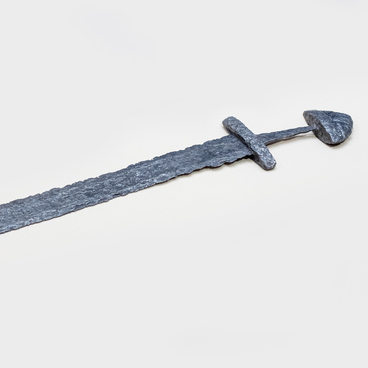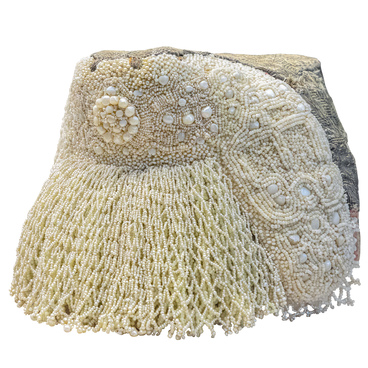The “volokusha” boat, presented in the permanent exhibition of the National Museum of Karelia, was made of wood and horsehair in the 19th century in the Olonets governorate. Vladimir Dal, a Russian ethnographer and writer, described this type of boat as follows,
“Volokusha” boat
Время создания
1891 – the 1910s
Размер
128x29x20 cm
Техника
embossing
Выставка
#1
“Volokusha” boat
#2
#4
Kerezha, kerezhka — Lappish reindeer and dog sleds on one wide skid, in the form of a boat, sometimes covered. In the Olonets province, in impassable forests and swamps, two people drive sleds with luggage or a police official.
#5
The most common type of transport among the inhabitants of the modern territory of Karelia were sleds. They had been used long before the Karelians learned to use draft horses. It was a small sled to be handled by one person. Karelians called them “akhkivo”. In Finnish ethnographic literature, this transport is known as “Lappish sleds” or “volokushi boats”. Karelian akhkivos were close to the traditional Lappish single-runner sled, but they were smaller.
An akhkivo resembled a boat. They were based on a thick birch board, one end of which was bent like a sled runner. Narrow boards were tied to this board with ropes or rods-the sides. Ropes, or rods were passed through the cracks that had been left in the sideboards. Each rod ended with a loop through which the rope was passed. Thus, four loops, through which a rope was passed, were arranged on each side.
The sides of the sled remained movable. When the cargo was put into the akhkivo, they were pulled together with a rope on top of it. In the advanced sleds, the sides were “sewn” with a wooden rod or nails. They were not movable anymore, and they could not be pulled together. A twisted wooden rod or several rods twisted together were called a “vitsa”. Such sled-boats with cargo were taken for hunting or fishing, and a man, going on skis, pulled them behind him.
According to the Soviet and Russian ethnographer Rosa Nikolskaya, on the one hand, the shape of the akhkivo resembles a boat, which means that the earliest transport in the northern territory was a boat, which later began to be adapted for dragging heavy loads through the snow. On the other hand, the similarity of the akhkivo with the Lappish “kerezhka” may indicate that the Karelians borrowed this type of transport from their neighbors.
An akhkivo resembled a boat. They were based on a thick birch board, one end of which was bent like a sled runner. Narrow boards were tied to this board with ropes or rods-the sides. Ropes, or rods were passed through the cracks that had been left in the sideboards. Each rod ended with a loop through which the rope was passed. Thus, four loops, through which a rope was passed, were arranged on each side.
The sides of the sled remained movable. When the cargo was put into the akhkivo, they were pulled together with a rope on top of it. In the advanced sleds, the sides were “sewn” with a wooden rod or nails. They were not movable anymore, and they could not be pulled together. A twisted wooden rod or several rods twisted together were called a “vitsa”. Such sled-boats with cargo were taken for hunting or fishing, and a man, going on skis, pulled them behind him.
According to the Soviet and Russian ethnographer Rosa Nikolskaya, on the one hand, the shape of the akhkivo resembles a boat, which means that the earliest transport in the northern territory was a boat, which later began to be adapted for dragging heavy loads through the snow. On the other hand, the similarity of the akhkivo with the Lappish “kerezhka” may indicate that the Karelians borrowed this type of transport from their neighbors.
#3
Ministry of Culture of the Russian Federation
читать дальшескрыть
00:00
00:00
1x
“Volokusha” boat
Время создания
1891 – the 1910s
Размер
128x29x20 cm
Техника
embossing
Выставка
Открыть в приложении
Поделиться



